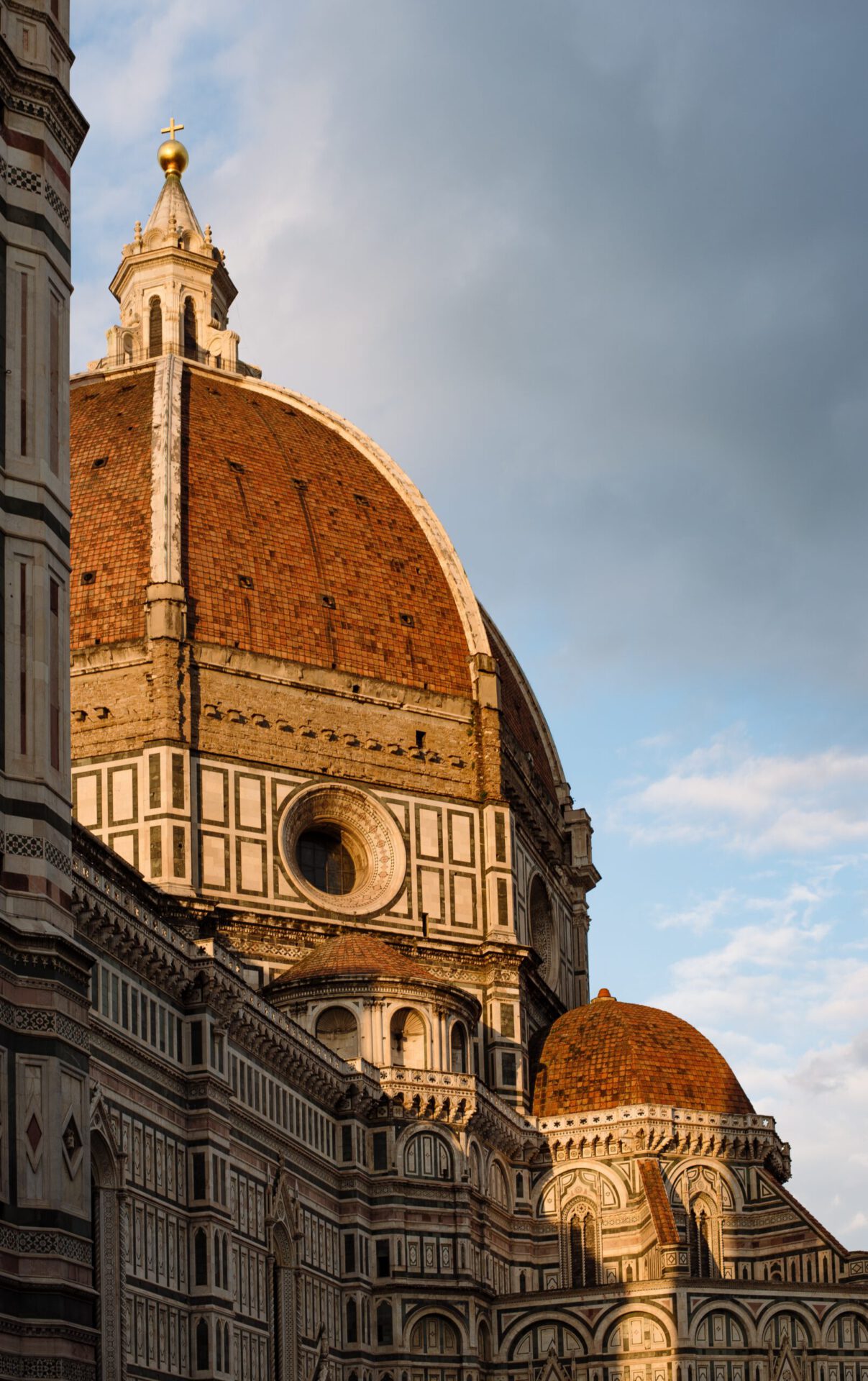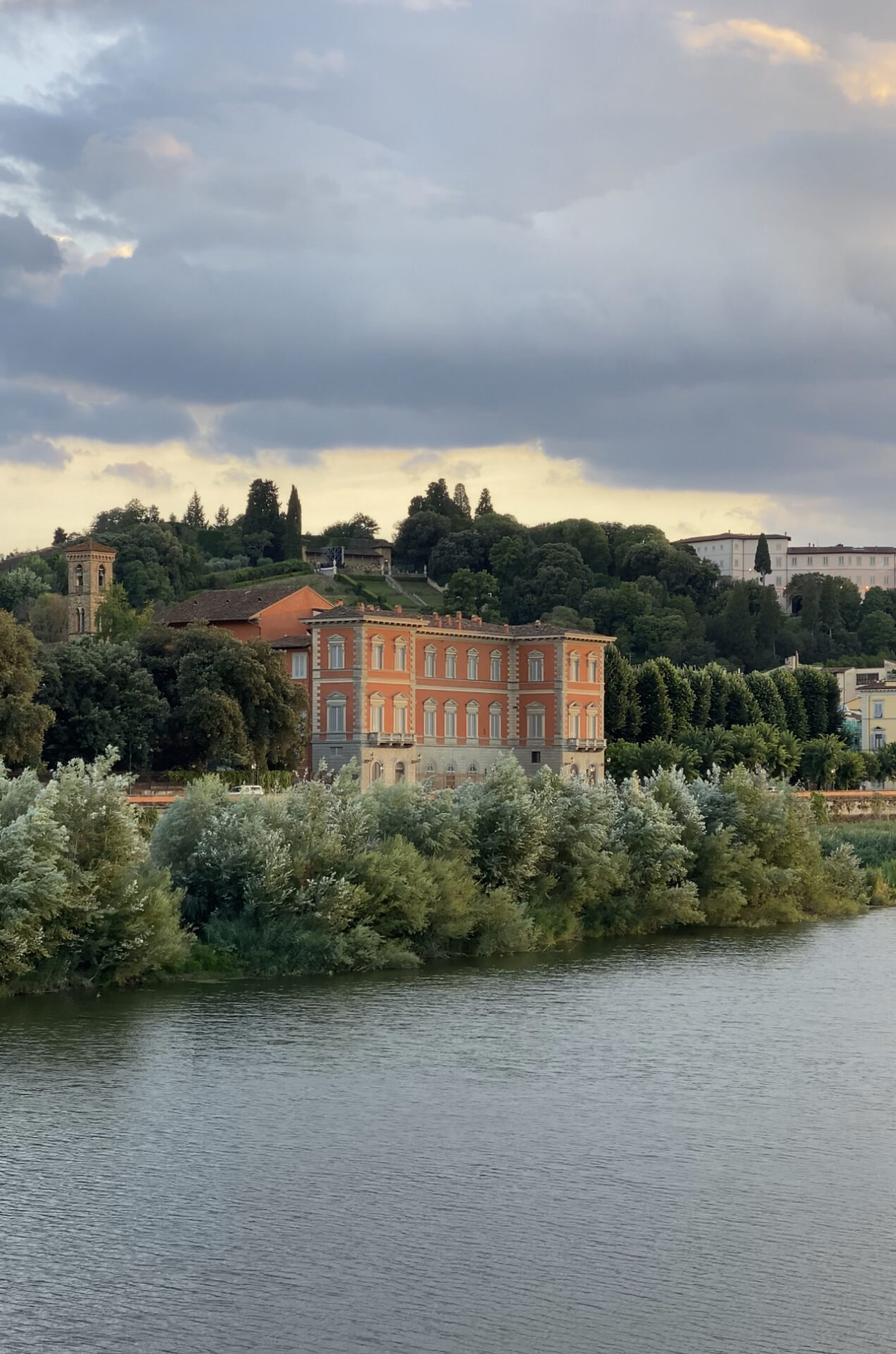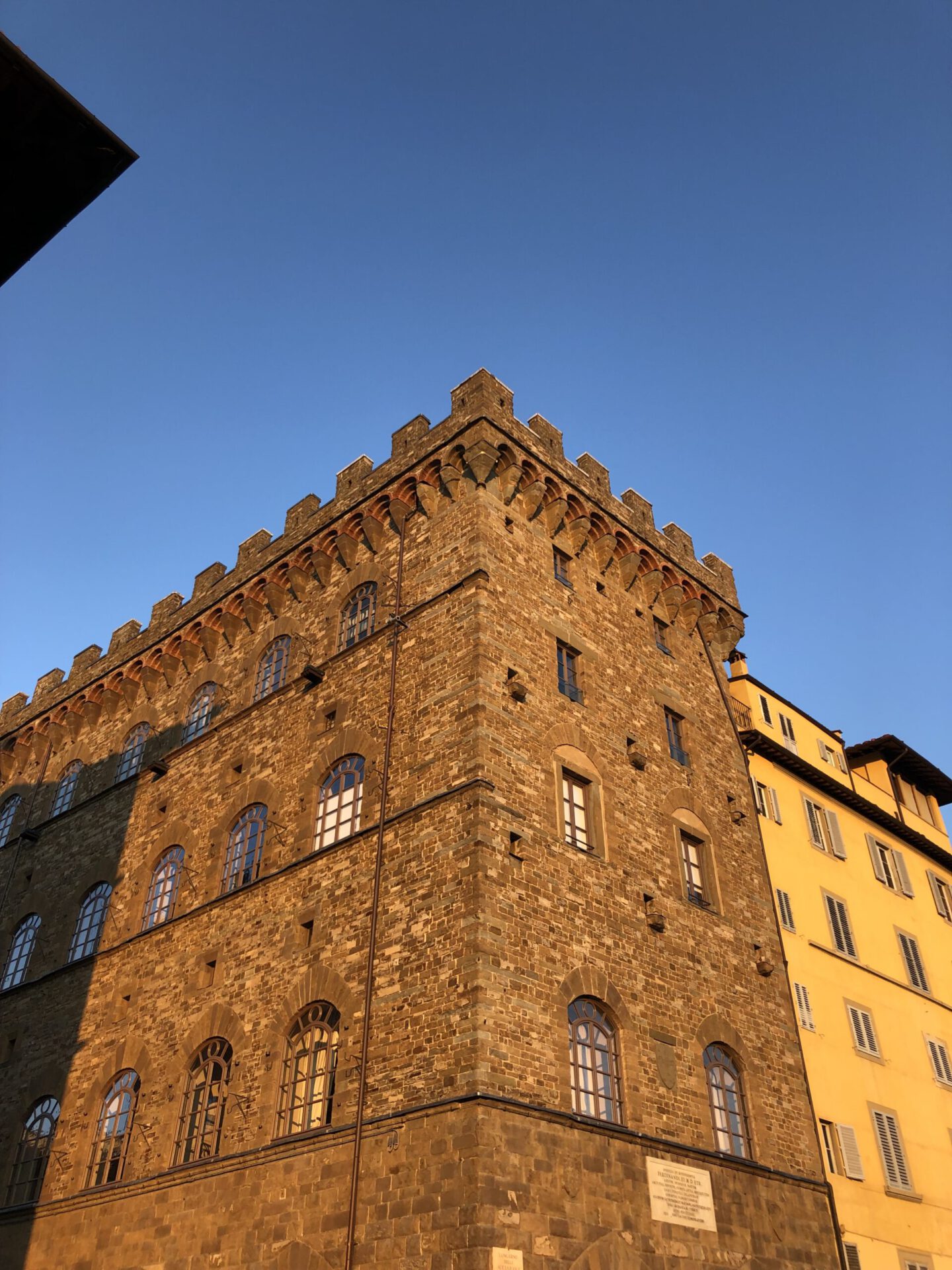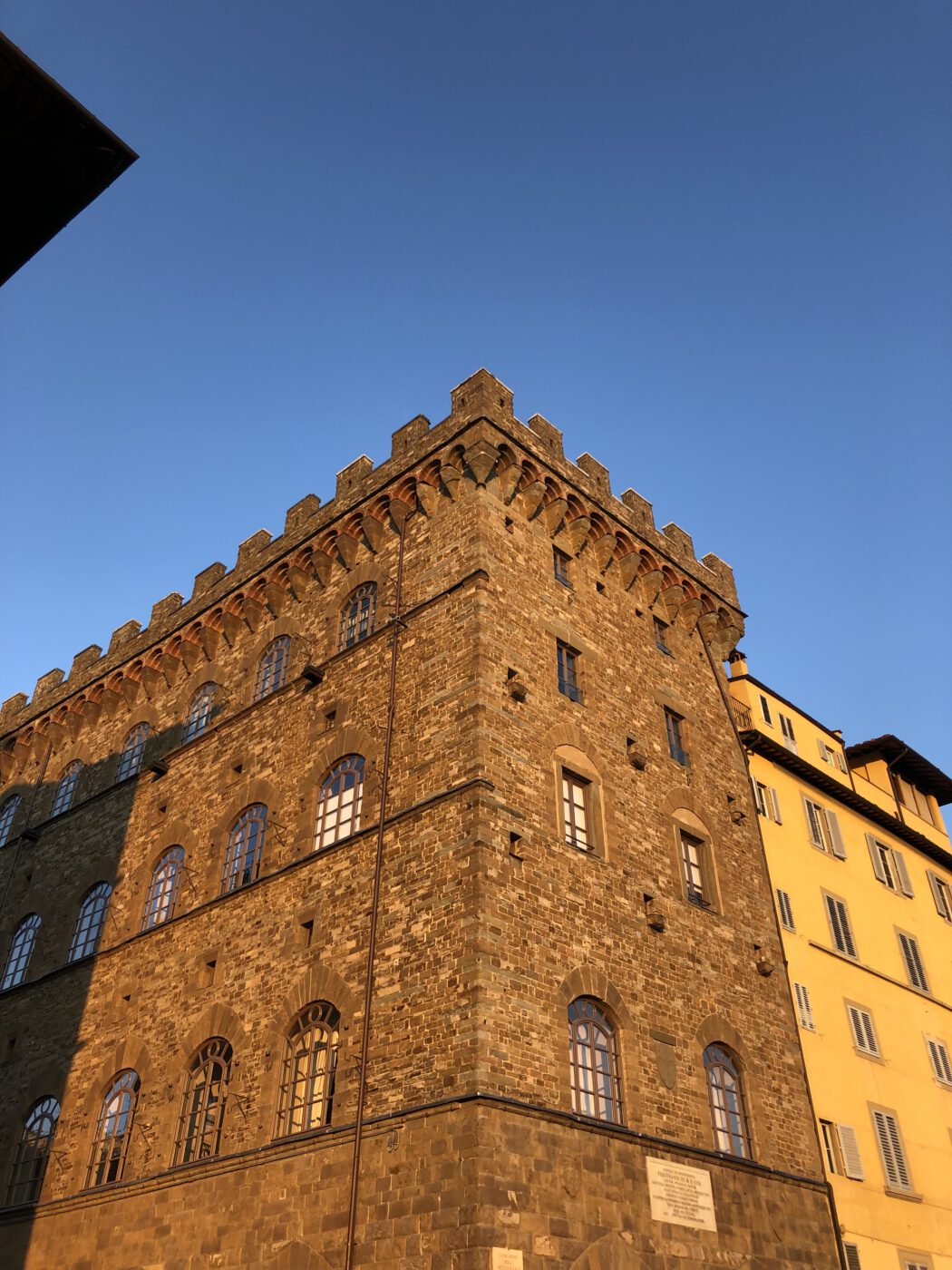I first arrived in Florence, like so many others, in love with a vision of Renaissance art formed through many visits to the National Gallery. It was June 2010 and my turn to choose the family holiday. Over the course of a week, I dragged my parents and increasingly reluctant sister from church to museum around the city: “just one more” I promised over and over. By the end of the trip, I was infatuated with the likes of Leonardo, Botticelli, and Michelangelo. But this was more than a teenage summer fling: I pursued a long-term relationship, enrolling to study art history at The Courtauld and spending both my Bachelors and my Masters writing about the Florentine Renaissance at every possible opportunity–love letters with footnotes and a bibliography.
What hasn’t already been written about Florence? Countless words have eulogised its architecture, history, and food, art acting as the binder, like egg tempera on a painter’s palette. Marcel Proust saw Florence as a miracle city with Brunelleschi’s Duomo as its crowning glory, while the marble patterns of Giotto’s bell tower captured Henry James’ imagination. Even Charles Dickens was inspired to wax lyrical about the mesmerizing form of the Ponte Vecchio. Something about the city turns even the most cynical writer into an art enthusiast.
Time passed in my art historian realm. I visited Florence countless times for research in the churches, the museums, the archives. Inevitably, the relationship soured: I had reached a dead end, and neither me nor Florence could find a solution. Go to Venice, my professors said, and I duly obliged. There, I was swept up in the colours of the floating city, working on the likes of Bellini and Titian, gaining the title of ‘Dr.’ in the process–my own marriage with the sea. I still visited Florence from time to time, of course, but I viewed it with the cool detachment that you do a former lover, impatient to return to the salty embrace of my beloved Venice. That’s the problem with cities; when you commit to one, all the others fade away.
Eventually, work led me to Munich, where post-Brexit travel restrictions kept me away from Italy for six months. Although Munich is referred to as the “Most Northern City in Italy” and I spoke more Italian than I did German, it wasn’t the same and I longed for Italian stamps in my passport. In early March, plans for an exhibiton on Venetian drawings called for a quick visit to Florence. I jumped at the chance, boarding the first flight to a city awakening from its winter slumber to the joys of la primavera.
Muscle memory applies also to a city you once knew intimately. Upon returning, I always find myself heading towards the Convent of San Marco: walking around the sunlight-dabbled cloister up to the individual cells with their frescoes painted by Fra Angelico, picturing monks drifting silently along these same corridors. The tranquility of the space is a perfect remedy to a long time away from Italy.
On emerging from the convent, I find that the sun has disappeared behind a sheet of clouds, as if someone swept a gray paint brush across the sky. It brings back memories of unsuccessful winter visits to the Archivio di Stato, when the gloomy sky merged with the weight of the pietra serena buildings to press down on me and my mood. Back then, days spent poring over 500-year-old documents often partially destroyed by the Great Flood of 1966 were mercifully broken up by lunch at Trattoria Cibrèo. Situated conveniently close by in Sant’Ambrogio and a stone’s throw from San Marco, I find myself heading towards there to make a reservation for dinner. A small sign in the window remarks that it is closed in mourning for the death of its owner. It will be a great loss for the legions of hungry Renaissance scholars who saw a joke in line with their own sense of humour in the name of the Florentine dish of chicken giblets so loved by Catherine de’ Medici. I stand for a minute or two before the door, stared back at by my reflection. What else has changed?
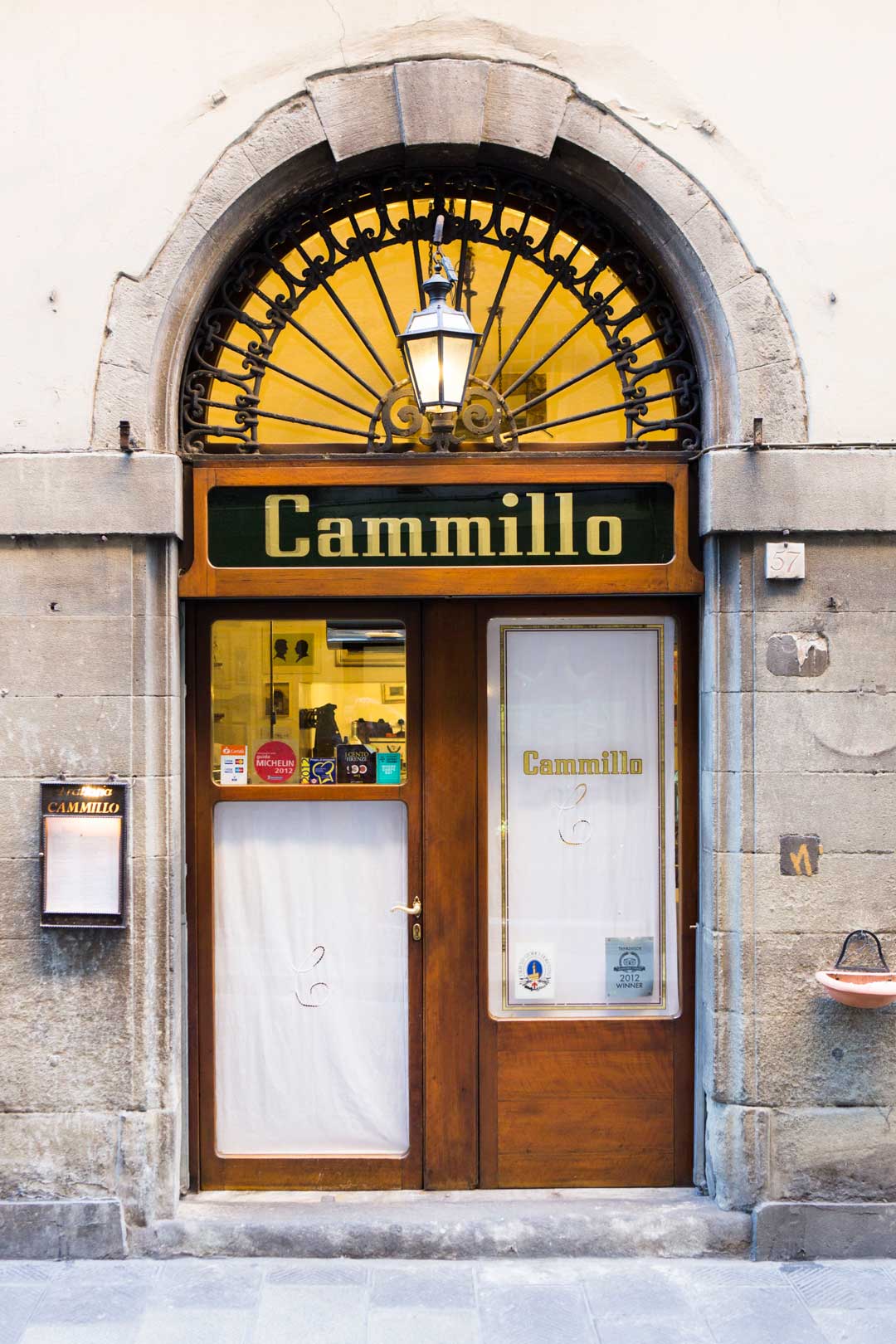
Consolation in tradition is, as always, to be found across the Arno at another Florentine institution, Trattoria Cammillo. Same seat – second room, by the window – and the usual order of foie gras fatto in casa followed by tartara di ‘calvanina’ al coltello. Over the requisite dessert of crumbly biscottini e vinsanto, I wonder what it is that makes Cammillo such a mainstay of the Florentine art scene on top of its food. Maybe it is the white curtains and tablecloths that has the promise of a blank sheet of paper, or the combination of framed sketches of Florentine masterpieces drawn by friends that covers the walls. In any case, on any given night, you could be dining alongside a curator, collector, or even a count who still owns the artworks commissioned by his ancestors. When I was last in Florence, drunk on the joy of our reunion, my Florentine friends and I stayed late into the night, recounting our curatorial adventures and misadventures.
One name that inevitably came up was that of John Pope-Hennessey, or “The Pope” as he came to be known. The title is no misnomer: his writings on Florentine sculpture had as much impact as the Bible, and his artistic approach became a religion of its own. In the final years of his life, he relocated to Florence, establishing his kingdom from the Palazzo Canigiani along the winding Via de’ Bardi. A small plaque on the façade now announces his apartment, which has hosted many an art historian and artist both before and after his death for aperitivo on the terrace with unrivaled views of the city. An entire day in Florence can be spent following his footsteps, from morning espresso overlooking the Duomo in Caffè Scudieri to an amaro at Procacci, where Florence’s elite stand shoulder to shoulder in the cramped space hidden in plain sight on the via Tornabuoni.
For me, no presence in the city looms larger than that of Michelangelo. Months spent going through his letters and studying his drawings means I happen to know him rather well; he forever accompanies my walks like a shadow dressed in the black clothing he so favoured. When I pass San Lorenzo, I see not just an unfinished façade, but countless sketches scribbled by an increasingly frustrated artist; when I peek through the gates of the Palazzo Medici-Riccardi, I picture a teenage prodigy learning to carve marble. Early one morning, I find myself tracing the familiar path up to Bellosguardo just beyond the southern gates to where the “Divine One” once rented a house. I continue my stroll past Porta Romana and along via Macchiavelli to Arcetri, saying buongiorno to builders and nonne I pass on my way. Up in the hills, Florence is another world; Michalengelo knew that.
The clock strikes nine and I am due at the Uffizi. Weaving my way past the tourists congregating at the ticket window, I find the staff entrance and head up to the Gabinetto to spend the morning holding priceless drawings in my hands. Work done, I take the secret exit into the museum proper. Resisting the urge to head straight to a trattoria for lunch, I backtrack and take the long route through the galleries–passing the familiar faces of Botticelli, Raphael and Caravaggio as I go–and lingering a little longer in front of the paintings that really speak to me.
That’s the thing: art historians aren’t meant to have favourites. The discipline should be as impartial as possible. In reality, everyone has their preferred artist and artworks they can’t resist seeing again and again. Crossing Florence is never done in a direct line, but in a dot-to-dot method, expertly scheduled to church opening times. This afternoon, I follow a familiar route from the Palazzo Pitti stopping just before the Ponte Vecchio to peer through the darkness at Pontormo’s eerily tranquil Deposition of Christ, then past the aptly named Piazza del Limbo towards Chiesa di Santa Trinità. Once inside, I make a beeline to the north-western corner for a tete-a-tete with Florence’s leading families. A French couple are already there, describing fresco covered walls of the Sassetti Chapel with the wonderful lyricism of the French language. The clock ticks out on the six minutes of illumination that four euros buys, and they leave. I remain. The combination of natural light and candle flame shows the chapel at its best, and the faces of Florence past peer out from the darkness.
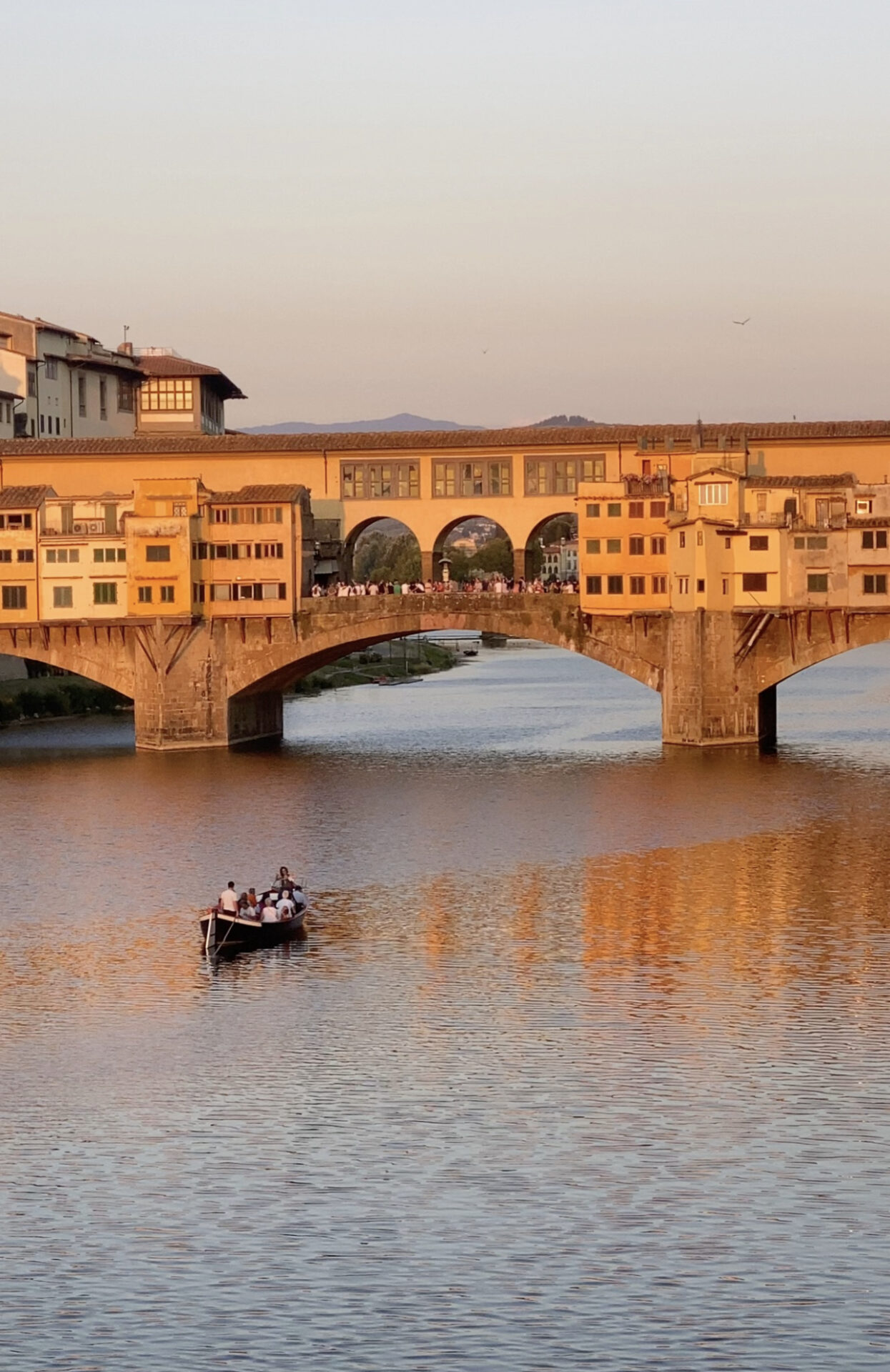
Emerging from Santa Trinità, I turn right, and there it is: sunset on the Arno. A masterpiece of the genre, specific to early spring when the still-cold air combines with the increasingly strong sun, turning the sky an intense ultramarine hue originally reserved for painting the robes of the Madonna. Resisting the urge to linger on the Ponte Santa Trinità, I hurry across to Santo Spirito and up to the terrace of the Palazzo Guadagni. There, I watch as the buildings turn from ochre to liquid gold to molten lead as the sun disappears; it’s no small wonder that the Medici established one of the earliest alchemy workshops.
The sky continues its metamorphosis from burnt shades to pastel hues, and I can’t help but think of Henry James’ words: “Everything about Florence seems to be coloured with a mild violet, like diluted wine.” Despite the spectacle, it is too cold to linger outside after sundown; so I head off in search of some undiluted wine. The logical stop is just around the corner at Il Santino, a holy place where many sins have been committed over the years. The staff are old friends, sharing stories of the latest Florentine gossip over generously filled glasses of Brunello di Montalcino.
Outside, darkness envelops the streets. The night is clear and it is only 11:30 PM. The perfect time for a late-night stroll through Florence. The streets are empty, but I am accompanied by the figures of Florence’s past, whispering their secrets. A few minutes after midnight, I cross the vast expanse of the Piazza della Signoria as I head back towards the Oltrarno. My eyes drift, as always, to the sculptures gathered under the Loggia dei Lanzi and settle on that of Perseus holding aloft the Head of Medusa. She returns my gaze and I stop in my tracks: cementing the revival of my infatuation with Florence in stone.
